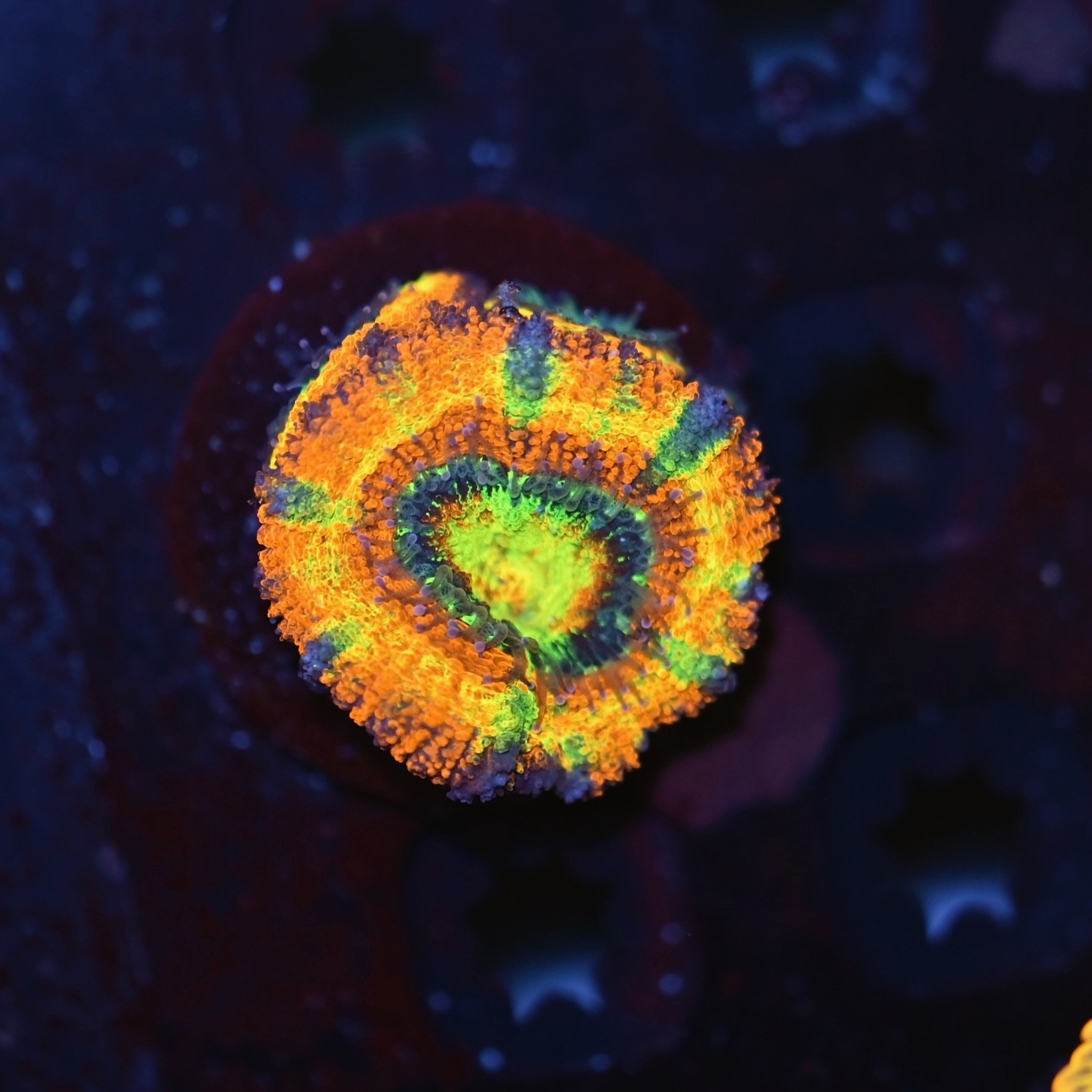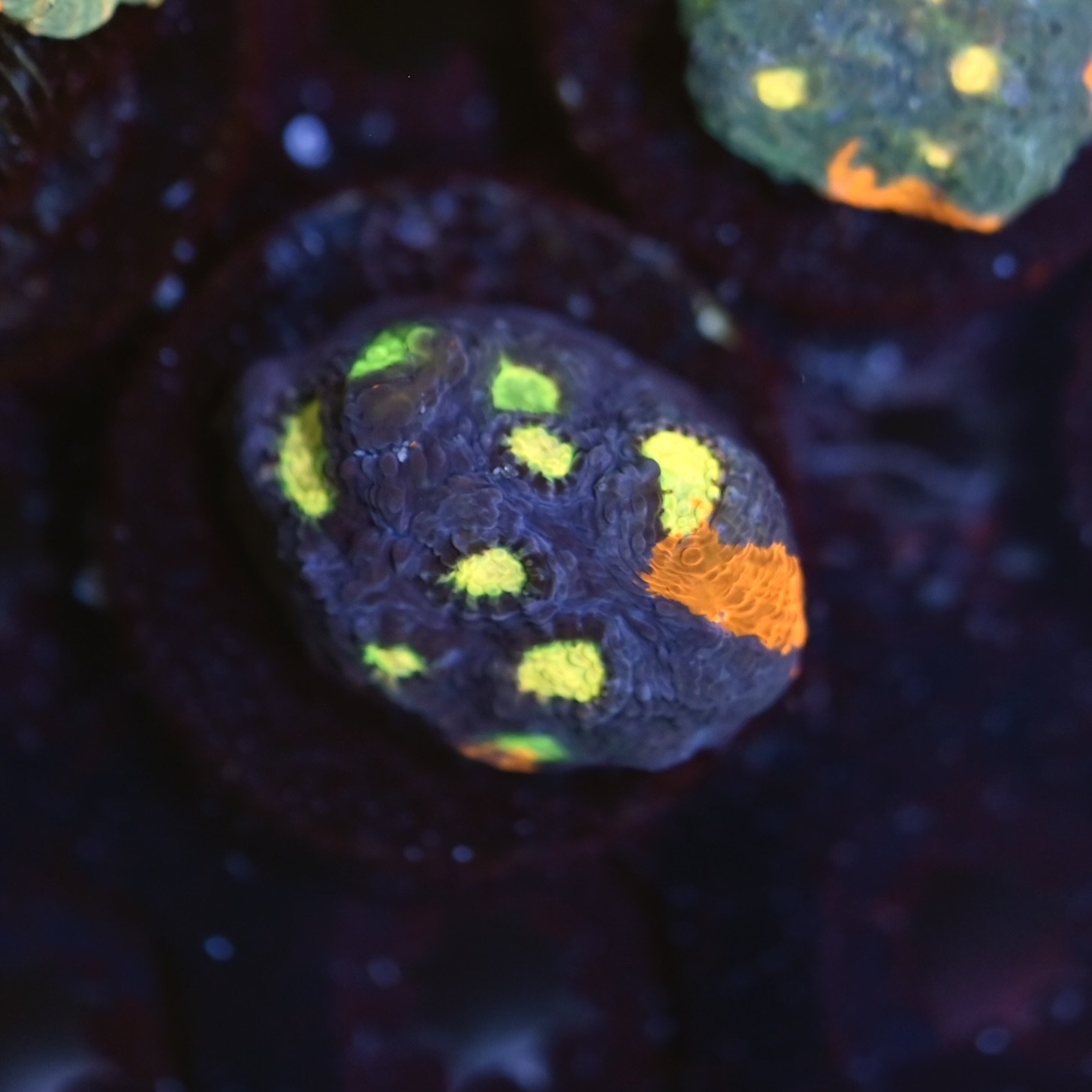 Image 1 of 1
Image 1 of 1


Rainbow Chalice
Lighting:
Moderate to low light is best.
PAR range: 50–150.
Avoid intense direct light — can cause bleaching or loss of color.
Acclimate slowly if moving from low to higher light conditions.
Flow:
Low to moderate, indirect flow.
Just enough to keep detritus off but not enough to damage tissue or cause recession.
Too much flow can irritate the coral’s delicate tissue.
Water Parameters:
Temp: 76–80°F (24.5–26.5°C)
Salinity: 1.025 specific gravity
pH: 8.1–8.4
Alkalinity: 8–10 dKH
Calcium: 400–450 ppm
Magnesium: 1250–1350 ppm
Nitrates: <10 ppm (but not 0)
Phosphates: <0.03 ppm (again, not zero)
Chalices are sensitive to instability, especially swings in alkalinity.
Feeding:
Photosynthetic, but benefits greatly from targeted feeding 1–2x per week.
Feed at night or when feeding tentacles are extended.
Placement:
Bottom to middle of the tank, on a stable rock or frag rack.
Avoid shadows from overhangs, but don’t blast with top-tier light.
Allow room to grow — some species can extend long, aggressive sweepers.
Aggression:
Chalice corals can be very aggressive toward nearby corals.
Some species send out long sweepers at night.
Keep at least 3–5 inches of space between chalices and others.
Fragging:
Frag with a diamond band saw or coral cutters.
Cut outside the mouth areas.
Handle gently — tissue is very delicate and can recede if damaged.
Common Issues:
Tissue recession: Often due to unstable alkalinity, direct flow, or light stress.
Pest snails or flatworms: Inspect regularly.
Algae overgrowth: If under low flow and nutrients are high.
Lighting:
Moderate to low light is best.
PAR range: 50–150.
Avoid intense direct light — can cause bleaching or loss of color.
Acclimate slowly if moving from low to higher light conditions.
Flow:
Low to moderate, indirect flow.
Just enough to keep detritus off but not enough to damage tissue or cause recession.
Too much flow can irritate the coral’s delicate tissue.
Water Parameters:
Temp: 76–80°F (24.5–26.5°C)
Salinity: 1.025 specific gravity
pH: 8.1–8.4
Alkalinity: 8–10 dKH
Calcium: 400–450 ppm
Magnesium: 1250–1350 ppm
Nitrates: <10 ppm (but not 0)
Phosphates: <0.03 ppm (again, not zero)
Chalices are sensitive to instability, especially swings in alkalinity.
Feeding:
Photosynthetic, but benefits greatly from targeted feeding 1–2x per week.
Feed at night or when feeding tentacles are extended.
Placement:
Bottom to middle of the tank, on a stable rock or frag rack.
Avoid shadows from overhangs, but don’t blast with top-tier light.
Allow room to grow — some species can extend long, aggressive sweepers.
Aggression:
Chalice corals can be very aggressive toward nearby corals.
Some species send out long sweepers at night.
Keep at least 3–5 inches of space between chalices and others.
Fragging:
Frag with a diamond band saw or coral cutters.
Cut outside the mouth areas.
Handle gently — tissue is very delicate and can recede if damaged.
Common Issues:
Tissue recession: Often due to unstable alkalinity, direct flow, or light stress.
Pest snails or flatworms: Inspect regularly.
Algae overgrowth: If under low flow and nutrients are high.

























